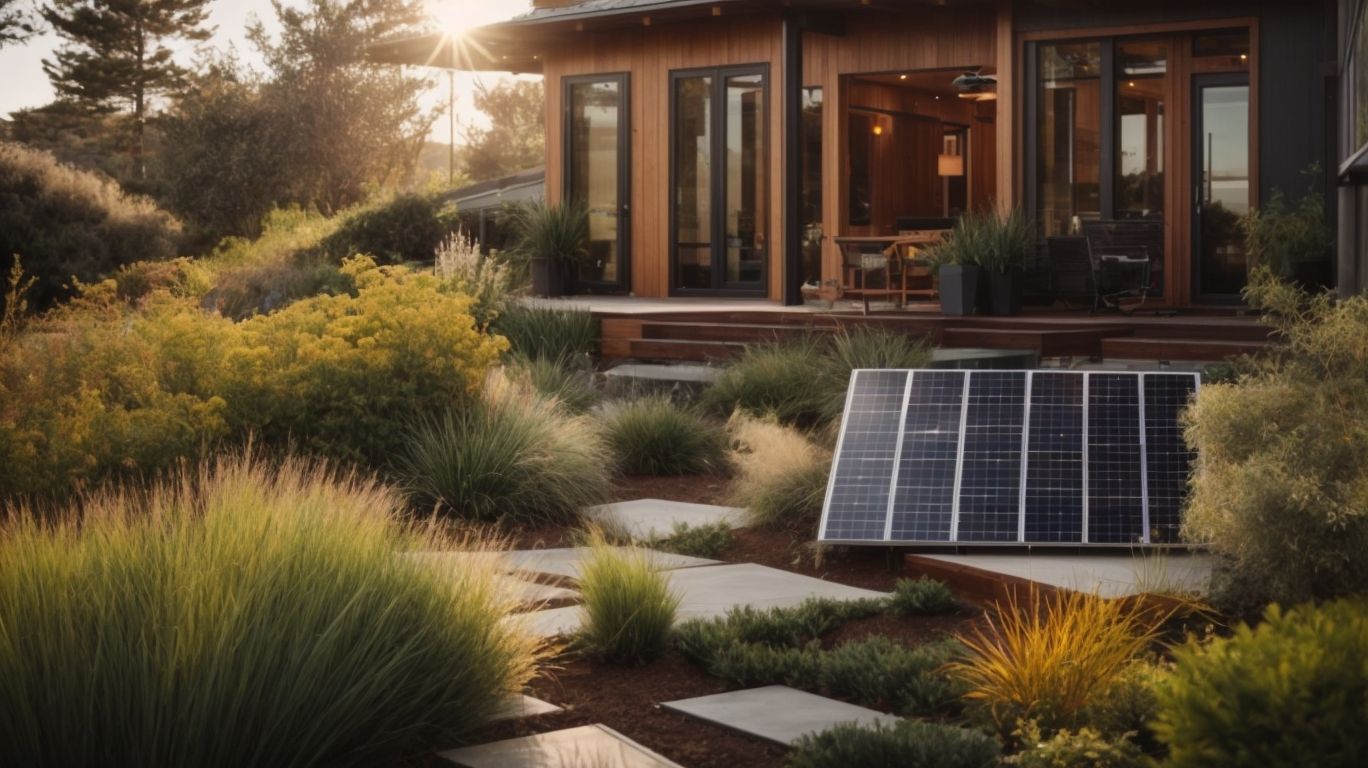
Understanding the Impact of a Second Story Addition on Your Bay Area Home’s Energy Efficiency
Considering adding a second story to your Bay Area home?
Before taking the leap, understand how this decision can impact your home’s energy efficiency.
Explore the benefits of a second story addition, ways to improve energy efficiency, and factors to consider before embarking on this renovation journey.
Learn about key considerations and expert tips to make your second story addition a success.
What is a Second Story Addition?
A second story addition refers to the process of expanding a home vertically by adding an extra level above the existing structure.
This type of renovation is a popular choice for homeowners looking to increase living space without sacrificing yard space. By building upwards, individuals can significantly enhance the functionality and value of their property. The benefits of a second story addition include creating additional bedrooms, bathrooms, or even a dedicated home office or entertainment area. The construction process typically involves structural assessments to ensure the existing foundation can support the new level, followed by framing, roofing, insulation, and interior finishing work to seamlessly integrate the new space with the original design.
Why Do People Choose to Add a Second Story?
People opt for a second story addition to enhance their home’s living space, increase property value, and implement sustainability measures.
By adding a second level to their existing home, homeowners can create extra rooms for growing families, dedicated office spaces, or guest accommodations, thereby significantly improving the overall living conditions. The added square footage opens up possibilities for creative design layouts and increased functionality, making the space more versatile and accommodating.
From a property value perspective, adding a second story not only increases the selling price potential but also enhances the overall attractiveness of the home in the real estate market. Integrating sustainable features such as energy-efficient windows, solar panels, and eco-friendly materials in the second story addition can contribute to a more environmentally conscious lifestyle and reduce long-term energy costs.
The Impact of a Second Story Addition on Energy Efficiency
Adding a second story can have a significant impact on the energy efficiency of a home, influencing both energy consumption and the overall environmental footprint of the property.
When considering the implications of a second story addition, it is important to analyze how this modification can shape the patterns of energy usage within the house. The increased square footage from adding a second story may result in higher heating and cooling demands, potentially leading to elevated electricity and fuel consumption. Incorporating energy-saving features such as upgraded insulation, energy-efficient windows, and smart home technologies can mitigate these effects and contribute to a more sustainable living environment. By implementing these eco-friendly practices, homeowners can reduce their carbon footprint and embrace a greener lifestyle.
How Does a Second Story Addition Affect Energy Usage?
A second story addition can impact energy usage by influencing the operation of HVAC systems, climate control mechanisms, and overall energy consumption within the home.
The addition of a second story to a house alters the dynamics of heating, ventilation, and air conditioning systems. With the increased square footage, the HVAC system may need to work harder to maintain desired temperatures, leading to higher energy consumption. Modifications to existing climate control mechanisms become necessary to manage the thermal performance of the expanded space.
This adjustment in HVAC operation can result in noticeable changes in energy usage patterns, as the system strives to regulate indoor temperatures effectively. The additional load imposed by the new story can prompt homeowners to make informed decisions regarding energy-efficient practices to enhance overall climate management.”
What Factors Influence Energy Efficiency in a Second Story Addition?
Several factors influence energy efficiency in a second story addition, including the quality of insulation, the type of windows installed, and the roofing materials used.
- Proper insulation plays a crucial role in reducing heat transfer and maintaining a comfortable indoor environment. By selecting high-quality insulation materials that provide a strong thermal barrier, you can significantly decrease the energy required for heating and cooling.
- When it comes to windows, opting for energy-efficient designs with multiple panes and low-e coatings can prevent heat loss in the winter and heat gain in the summer.
- Choosing roofing materials with high solar reflectance and thermal emittance properties can help regulate interior temperatures and reduce reliance on heating and cooling systems, ultimately lowering energy consumption and long-term building operation costs.
Ways to Improve Energy Efficiency in a Second Story Addition
Enhancing energy efficiency in a second story addition can be achieved through upgrades such as installing energy-efficient appliances and incorporating green building practices.
Integrating sustainable materials into the construction of the second-story addition can significantly contribute to reducing energy consumption. Opting for materials like bamboo flooring, recycled glass countertops, and reclaimed wood not only adds a unique aesthetic appeal but also promotes environmental sustainability.
Embracing passive design strategies, such as maximizing natural light and ventilation, can further enhance energy efficiency. These approaches can help create a comfortable, eco-friendly living space while minimizing the environmental impact of the renovation project.
Insulation
Insulation plays a crucial role in enhancing energy efficiency and ensuring optimal thermal comfort in a second story addition.
Effective insulation not only helps in maintaining a consistent indoor temperature but also reduces the reliance on heating and cooling systems, thus lowering energy usage and utility costs.
To assess the energy performance of a home with a second story addition, conducting regular energy audits is recommended. These audits help identify areas of heat loss or gain, enabling homeowners to make informed decisions about the type and amount of insulation needed.
When selecting insulation materials for the project, factors such as R-value, ease of installation, and environmental impact should be considered in order to achieve the desired balance between energy efficiency and comfort.
Energy-Efficient Windows
Installing energy-efficient windows in a second-story addition can promote natural ventilation, reduce energy costs, and potentially qualify for energy rebates.
Energy-efficient windows play a crucial role in maintaining a comfortable indoor environment by allowing fresh air to circulate throughout the space. By promoting natural ventilation, these windows help improve air quality and reduce the need for artificial cooling systems, which can lead to significant energy savings. In addition to lowering utility bills, the energy efficiency of these windows may make homeowners eligible for rebates and incentives offered by various government and utility programs, encouraging sustainable living practices and contributing to a greener future.
Proper Ventilation
Effective ventilation systems are essential in a second story addition to maintain indoor air quality, support energy management, and enhance overall environmental sustainability.
A well-designed ventilation system not only helps to remove indoor pollutants and odors but also ensures a constant flow of fresh air into the living space, promoting a healthier environment.
By efficiently regulating the airflow and temperature within the added space, proper ventilation can significantly contribute to reducing energy consumption and costs.
Implementing sustainable living practices by prioritizing proper ventilation in the design of a second story addition can have long-lasting benefits for both the inhabitants and the environment, minimizing the carbon footprint and supporting eco-friendly living.
Solar Panels
Integrating solar panels into a second story addition can harness solar power, contribute to energy conservation efforts, and reduce reliance on traditional energy sources.
These panels can efficiently capture sunlight and convert it into electricity, helping homeowners reduce their energy bills over time. By utilizing renewable energy sources like solar power, individuals can make a significant impact on reducing their carbon footprint and promoting sustainability. The incorporation of solar panels in home additions not only provides cost savings in the long run but also offers a sense of independence from fluctuations in energy prices. Solar energy systems typically require minimal maintenance, making them a convenient and eco-friendly choice for residential properties.
Considerations Before Adding a Second Story
Before embarking on a second story addition, it is crucial to consider factors such as local building codes, the permitting process, and associated construction costs.
- Adhering to zoning regulations is vital when planning a second story addition to ensure compliance with height restrictions, setback requirements, and property line limitations.
- Obtaining the necessary permits from the local authorities is essential to avoid legal issues and delays during the construction process.
- Conducting a thorough budget assessment to account for material costs, labor expenses, and potential unforeseen expenditures is also imperative in order to avoid financial strain and project interruptions.
Consult with a Professional
Engaging with experienced professionals such as contractors, architects, and homeowners can provide valuable insights and guidance for a successful second story addition project.
The collaborative efforts of these key players in the home improvement realm are crucial for ensuring that the project not only meets but exceeds expectations. Homeowners play a pivotal role in articulating their vision and understanding the practical considerations, while contractors bring their expertise in construction and project management. Architects provide the creative vision and technical know-how to translate ideas into feasible designs. By fostering open communication and embracing the input of all parties involved, the second story addition process can be streamlined and result in a seamless transformation of the home.
Assess the Structural Integrity of Your Home
Assessing the structural integrity of your home is critical before proceeding with a second story addition to ensure compatibility and identify any necessary engineering solutions.
- When considering adding a second story to an existing house, one must take into account the potential retrofitting needs to ensure that the current foundation and framework can support the additional load. Retrofitting options may include reinforcing existing walls, adding support beams, or even introducing a new structural system to enhance building efficiency.
- Structural considerations such as lateral bracing, load-bearing capacity, and compliance with local building codes are essential aspects to evaluate for a successful and safe second-story addition. Working with qualified engineers and contractors can help in implementing effective engineering solutions tailored to your home’s specific needs.
Check Local Building Codes and Permits
Before commencing a second story addition, it is essential to review local building codes, navigate the permitting process, and conduct an energy assessment to ensure compliance and efficiency.
Ensuring that your project meets all the necessary building regulations is crucial to avoid potential fines or delays. Obtaining the required permits not only guarantees that your addition is legal but also safeguards the safety of your structure and its occupants.
Conducting an energy assessment helps identify areas where energy efficiency can be improved, leading to cost savings in the long run and contributing to a more sustainable living environment. These steps are fundamental in creating a successful and environmentally conscious second story addition.
Evaluate Your Budget and Return on Investment
Evaluating your budget and assessing the potential return on investment are crucial steps in planning a second story addition to ensure cost-effectiveness and enhance property value.
Careful consideration of construction costs and property value implications can significantly impact the financial outcome of your home renovation project. By analyzing the expenses involved in adding a second story and comparing them to the potential increase in property value, homeowners can make informed decisions that align with their long-term financial goals. Implementing cost-effective approaches such as utilizing existing structural elements or choosing materials that offer a balance between quality and affordability can help maximize the return on investment in the long run.




No Comments